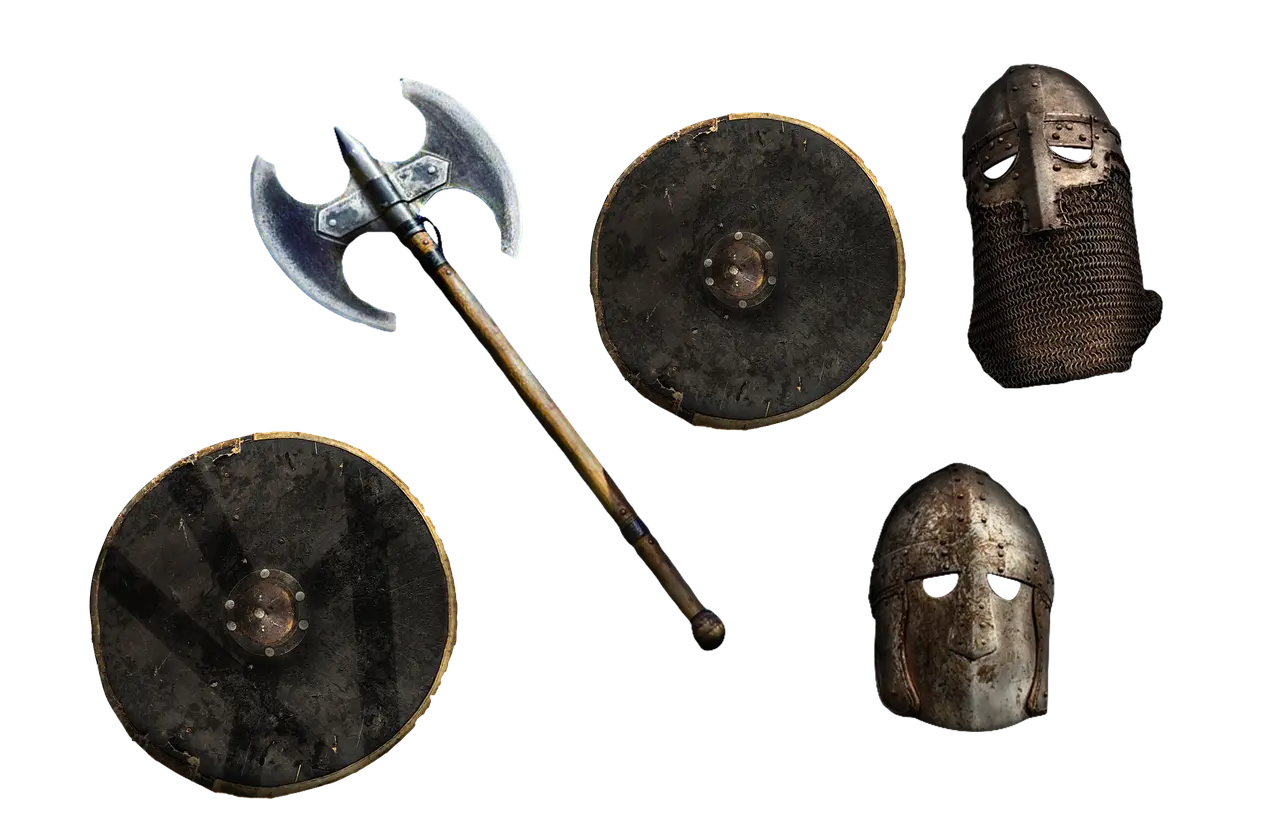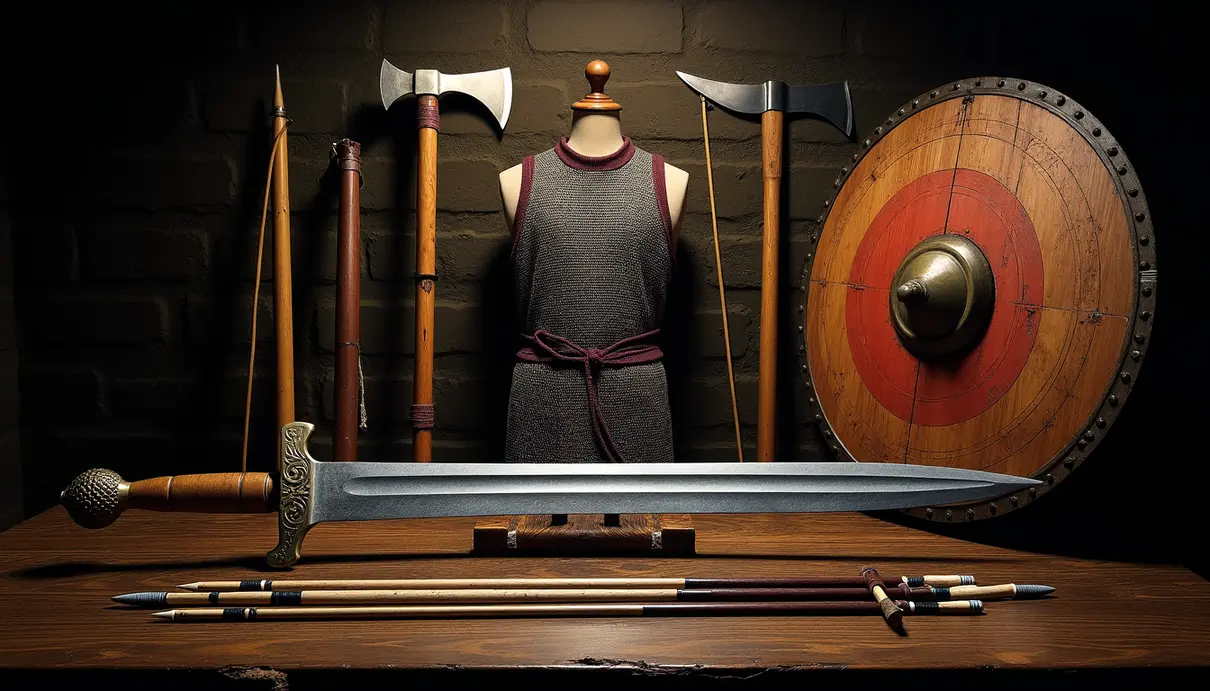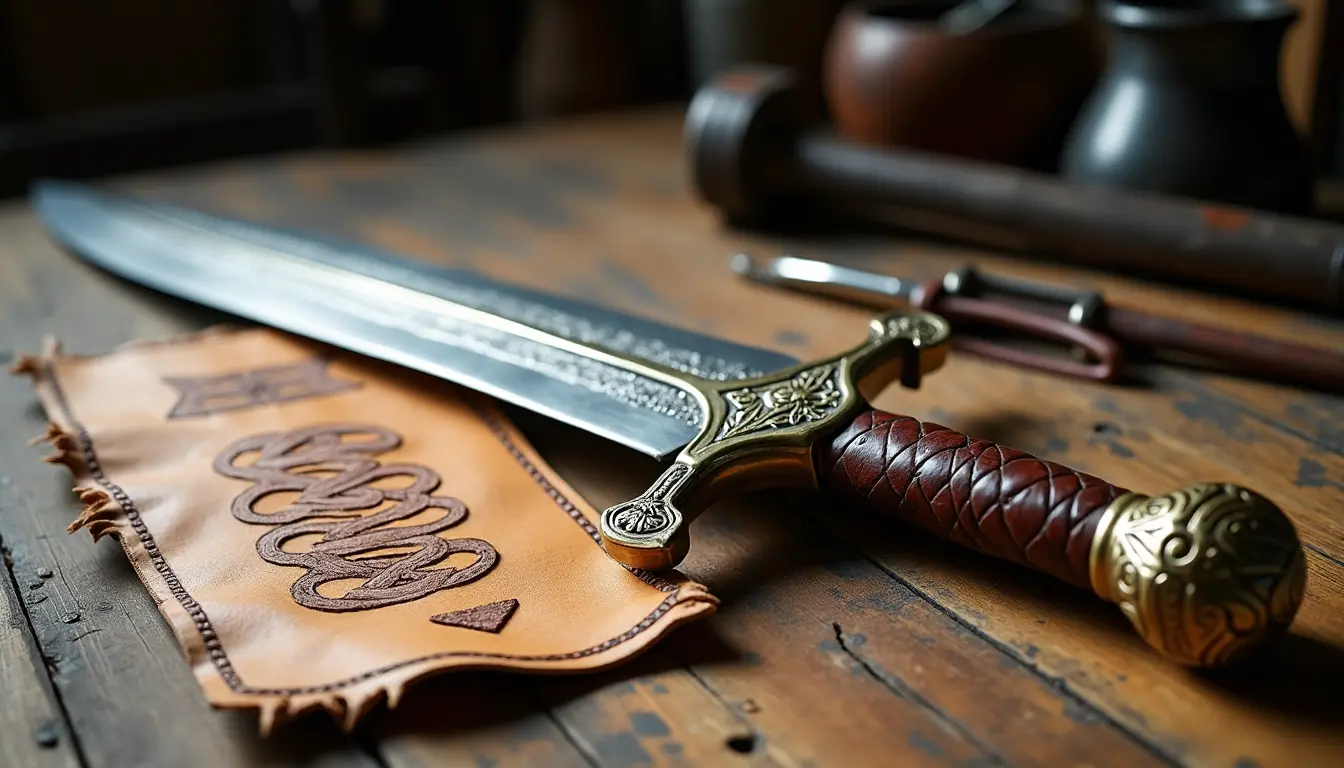

10 Deadly Viking Weaponry That Shaped Modern Combat
The Viking sword was more than just a weapon; it was a symbol of strength and honor, passed down through generations as a family heirloom. These legendary swords were 35 inches long and held significant cultural value beyond their impressive size. While most Viking warriors could not afford these prestigious weapons, they relied on more common tools like spears, Danish axes, and round shields in battle. These weapons played a crucial role in shaping Viking warfare significantly.
The Ulfberht swords, made between 800-1000 CE, were the finest examples of Viking weaponry. With about 170 of these swords found in Northern Europe, each blade was inscribed with the special mark “+VLFBERH+T” or “+VLFBERHT+”, signifying exceptional quality and prestige. The construction of these swords using crucible steel with three times the carbon content of regular medieval steel made them light, tough, and able to retain a sharp edge through many battles. Crafted in the Rhineland region, the level of skill displayed in making these swords would not be seen again until the Industrial Revolution.
Warriors required extensive training to wield an Ulfberht sword effectively. They practiced through physical work like farming and hunting, mock fights, and special combat moves that combined strikes and defensive blocks. The balance and flexibility of these swords allowed warriors to move smoothly in battle, striking quickly while remaining ready to defend themselves.
The influence of the Ulfberht swords extended beyond their time, shaping medieval warfare and sword-making traditions. The swords were built to “sing” during movement, creating a frightening effect in battle. The construction methods of these swords revolutionized weapon development throughout Europe, setting quality standards that lasted for centuries. Sword makers kept their methods secret, and fake Ulfberhts from that time have been found, attempting to copy the original superior features.
The Dane axe, with a broad blade measuring between 20 and 30 cm in width and a shaft made of high-carbon steel mounted on ash or oak, became one of the deadliest weapons in Norse arsenals during the late Viking Age. This two-handed weapon was revolutionary in its design and combat techniques. The superior craftsmanship of the Dane axe, with its thin blade and reinforced bit made from high-carbon steel, allowed for better edge retention and cutting power. Elite Norse warriors known as Huscarls used advanced fighting techniques with the Dane axe, including powerful strikes to break through shield walls and shield-hooking moves to create defensive gaps.
The impact of the Dane axe spread beyond Scandinavia into England, Ireland, and Normandy, showcasing its far-reaching influence on Viking weaponry. The Battle of Stamford Bridge in 1066 highlighted the power of the axe when a single Norse axeman held back many English soldiers, changing medieval fighting tactics and leading to the development of new polearm designs.
The Viking spear, particularly the famous Gungnir spear used to honor Odin, was a versatile weapon with different types and construction materials. The widespread use of spears in Viking warfare was due to their ease of use and production. The spear’s reach and flexibility allowed warriors to strike from a distance while maintaining defensive capabilities. Norse warriors used spears as their main frontline weapons for attack and defense, employing advanced battle techniques like the spear wall formation.
The construction of Viking spearheads evolved over time, with expert blacksmiths creating thrusting spears, throwing spears, ceremonial spears, and hunting spears using iron heads attached to wooden shafts. The combat range advantages of the spear gave warriors tactical benefits in battle, allowing for quick and deadly strikes while maintaining defensive capabilities. The spear’s use in Norse warfare was essential, as every warrior could wield one effectively, whether alone or in groups.
The seax, a Viking knife ranging from 3 to 29 inches in length, evolved from a battlefield companion into an everyday tool with various uses. The seax had six distinct variants, each serving specific purposes, from utility tasks to combat. The close combat techniques employed with the seax were specialized and deadly, allowing warriors to strike swiftly and control opponents effectively in close-quarters battles.
The versatility of the seax in battle was due to its speed and maneuverability, making it highly effective in confined spaces and close combat situations. The seax’s importance in Viking society went beyond combat, reflecting the owner’s wealth and power through its craftsmanship and design. The blade’s flexibility and striking power made it an essential weapon for farmers and elite warriors alike.
The Viking longbow, specifically the Hedeby bow measuring 192 cm in length, was a significant advancement in Viking weaponry, transforming warfare tactics and strategy. Crafted from yew wood with a D-shaped cross-section, the longbow had impressive power and draw weights, reaching up to 90-100 pounds force. The archery tactics employed by Viking warriors positioned archers behind spearmen formations during battles, creating an effective defense against mounted attacks. The longbow’s versatility and range made it a deadly weapon in both naval and land battles, with its impact felt far beyond traditional battlefield roles.
The Viking shield, particularly the round shields from Gokstad measuring 94 cm in diameter, played a crucial role in Norse defensive warfare. Constructed from lightweight woods like pine, fir, or spruce with iron bosses, Viking shields were engineered for protection and maneuverability in battle. The shield wall tactics employed by Norse warriors showcased their discipline and coordination in battle, creating an overlapping barrier of shields for group protection.
Recent archaeological studies have changed our understanding of shield usage in battle, suggesting that shields were used actively rather than passively. Warriors employed various defensive techniques, redistributing impact force, deflecting attacks, and creating offensive opportunities with their shields. Viking shields served multiple purposes beyond combat, with decorative elements reflecting their ceremonial and practical importance in Norse culture.
The battle axe, with its weighted head and steel blade mounted on a wooden shaft, was a powerful tool of war for Viking warriors. The axe head’s design allowed for devastating strikes and effective combat techniques, including breaking through shield walls and disarming opponents. The battle axe’s tactical advantages included simplicity in construction, durability, and effectiveness against armored foes, making it a fearsome weapon in battle.
The Viking halberd, a polearm combining an ax blade with a spear point on a shaft between 4 and 6 feet in length, was a versatile weapon used effectively in sea battles. The halberd’s unique design with multi-purpose combat features allowed for advanced fighting techniques and strategic uses in various combat situations. The weapon’s success in battle came from its ability to combine the functions of a spear, ax, and hook, creating a versatile tool for Viking warriors.
The Viking sling, a seemingly simple weapon, proved to be a deadly tool in Norse warfare, with the ability to hurl projectiles with crushing force at targets over 400 meters away. Crafted from non-stretchy materials like flax, hemp, or wool, the Viking sling’s design and construction allowed for accurate and powerful strikes in battle. The sling’s tactical benefits included unlimited ammunition, versatility in combat, and the ability to disrupt enemy lines from a distance.
Overall, Viking weaponry showcased the ingenuity and craftsmanship of Norse warriors. Each weapon played a unique role in battle, from the legendary Ulfberht swords to the versatile seax knives and the deadly Dane axes. The influence of Viking weapons extended beyond their time, shaping medieval warfare and modern military strategies. These weapons were not just tools of war but symbols of honor and strength, reflecting the rich cultural heritage and martial prowess of the Vikings.







